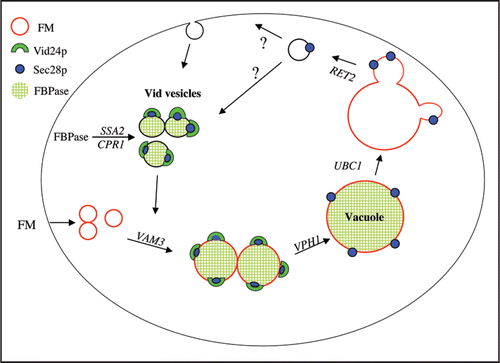Figures & data
Figure 1 A model for the FBPase trafficking pathway. Sec28p and other coatomer proteins associate with vesicles at an early step, and this complex recruits Vid24p to the vesicles. FBPase is imported from the cytosol into Vid vesicles via a process that requires Ssa2p and Cpr1p. Following the import of their cargo, the Vid vesicles converge with the endocytic pathway, in a VAM3 dependent manner. These endosomes then carry their cargo to the vacuole in a step that requires VPH1. Following endosomes fusion, Sec28p remains associated with the vacuole membrane, while the fate of Vid24p remains unknown. In the absence of UBC1, Sec28p is diffusely associated with the membrane. Finally, buds are formed and released from the vacuole in a RET2-dependent manner. The budded vesicles may recycle their membranes back to the plasma membrane, or alternatively, they may become Vid vesicles.
